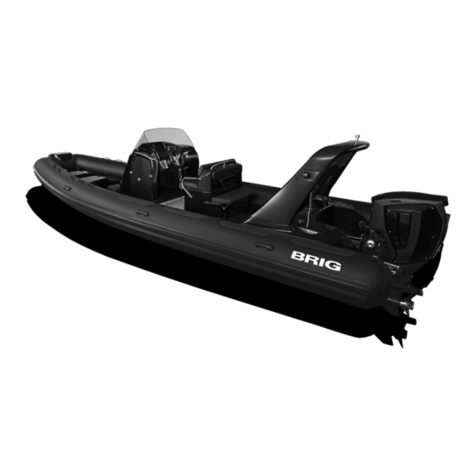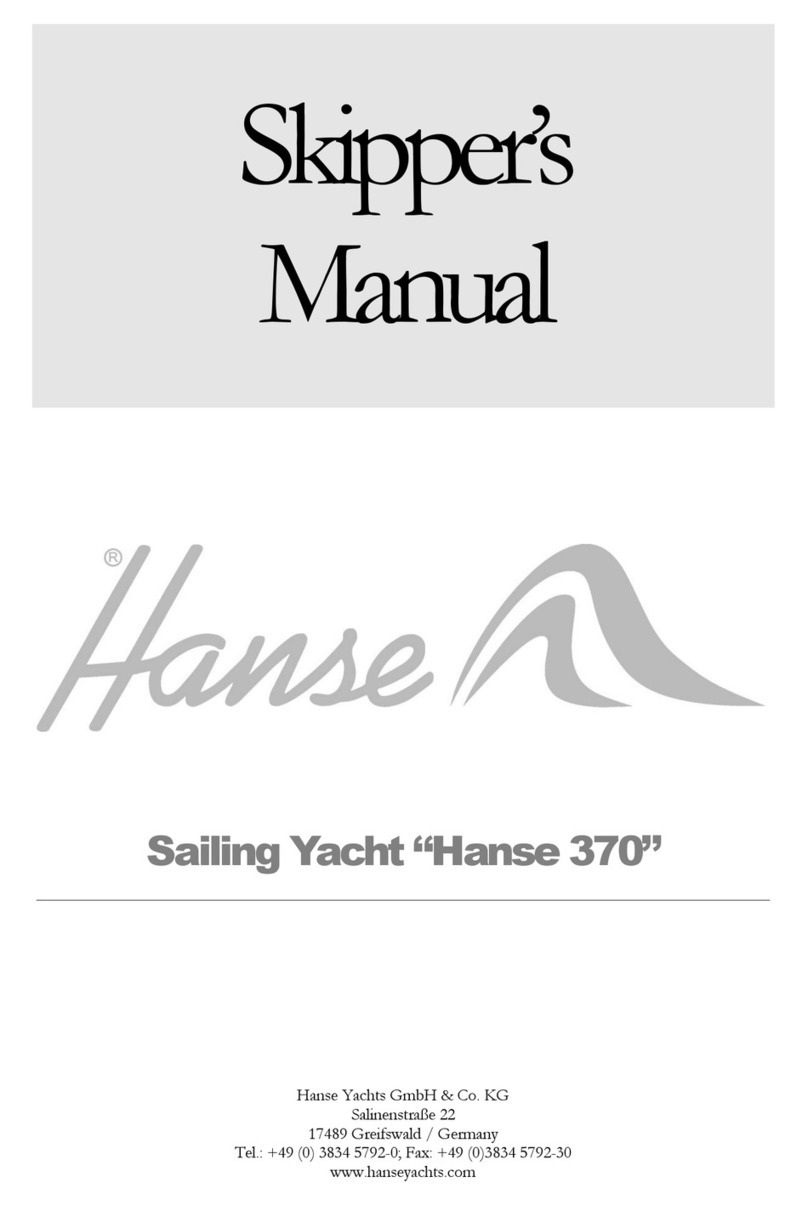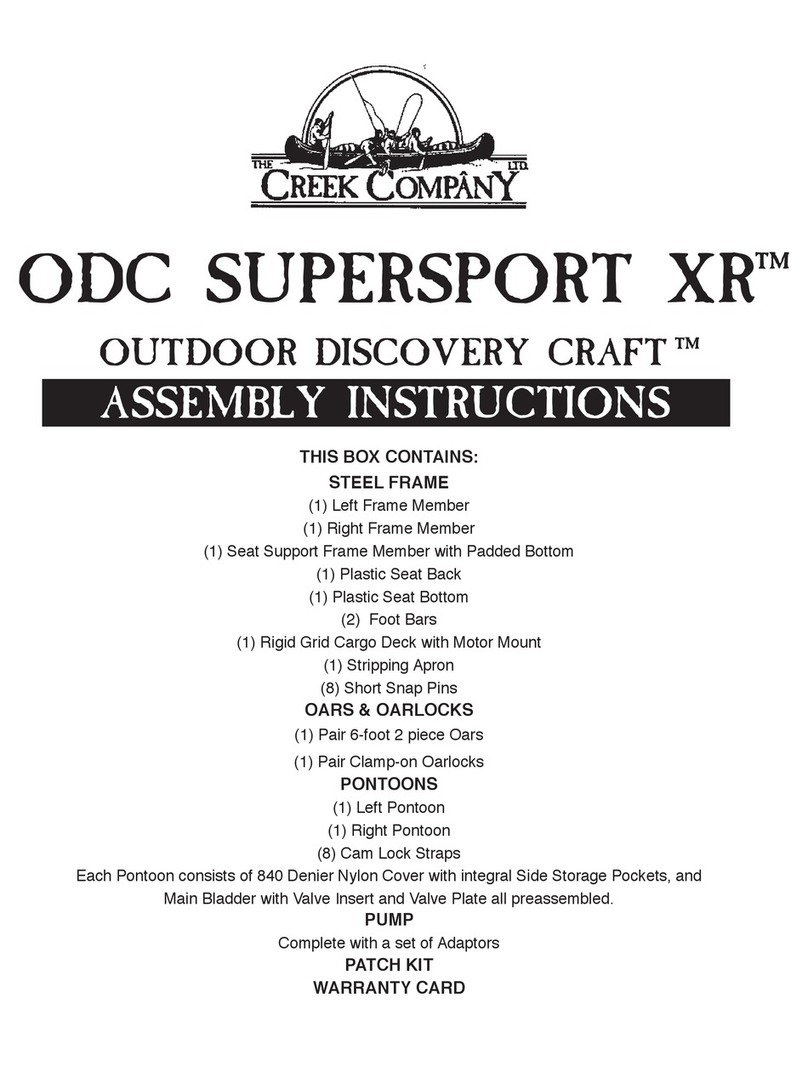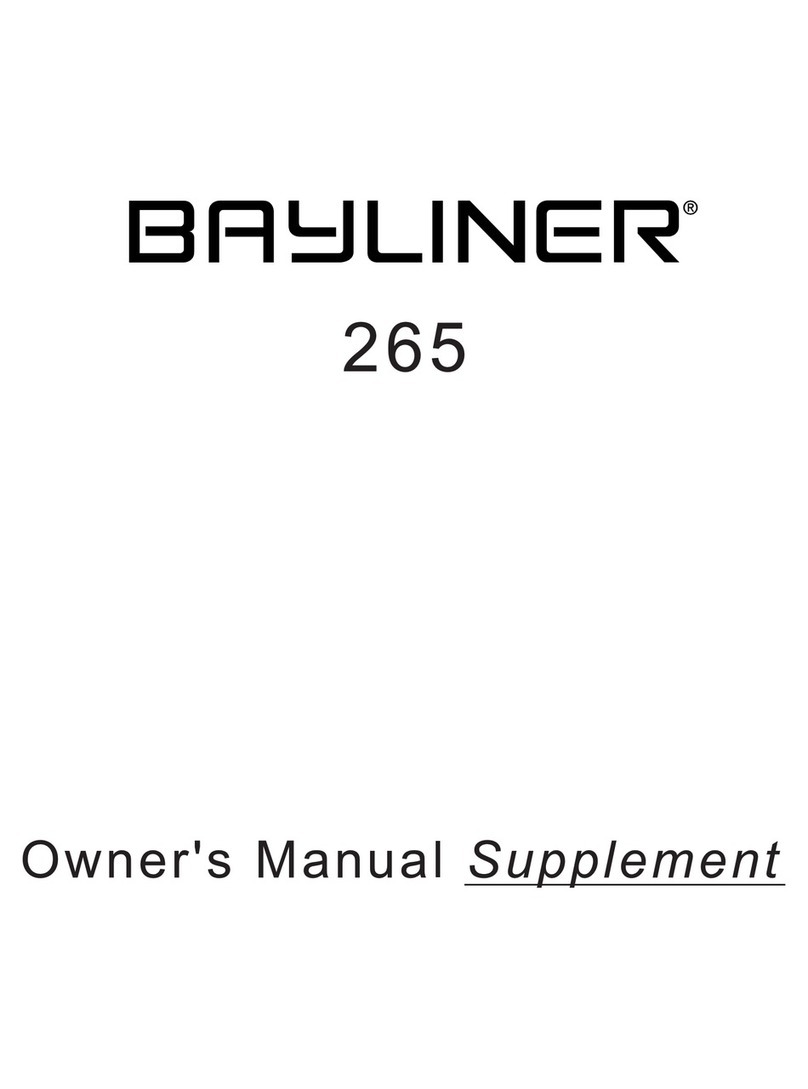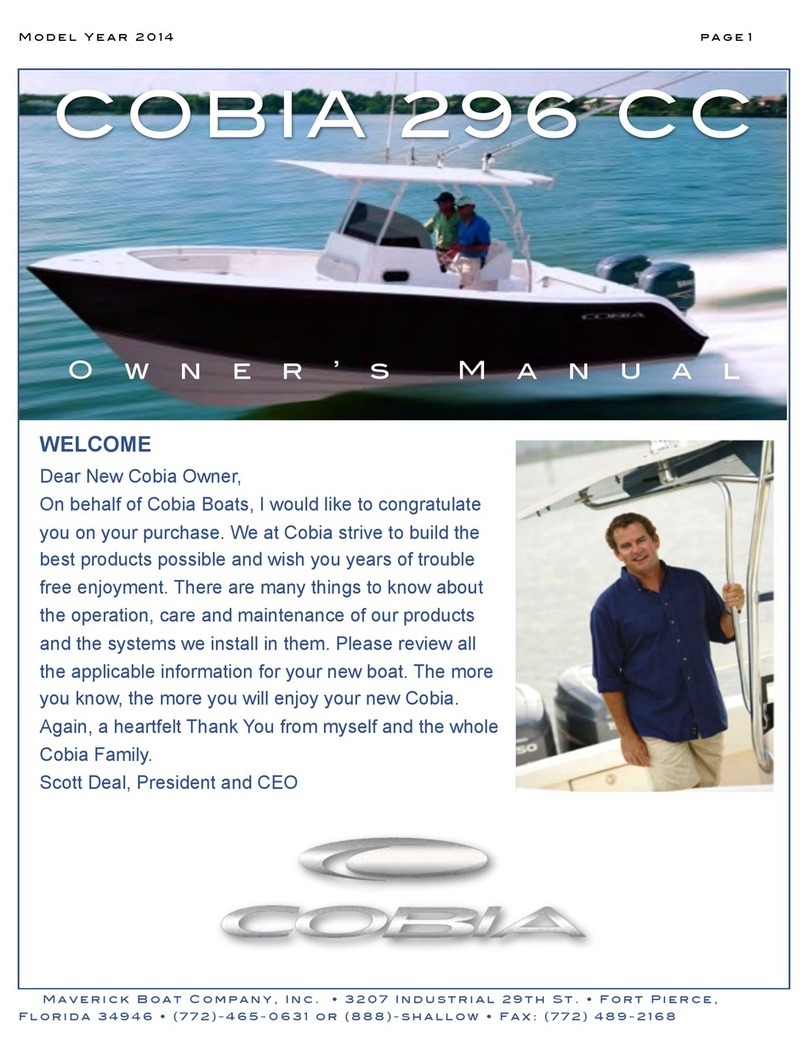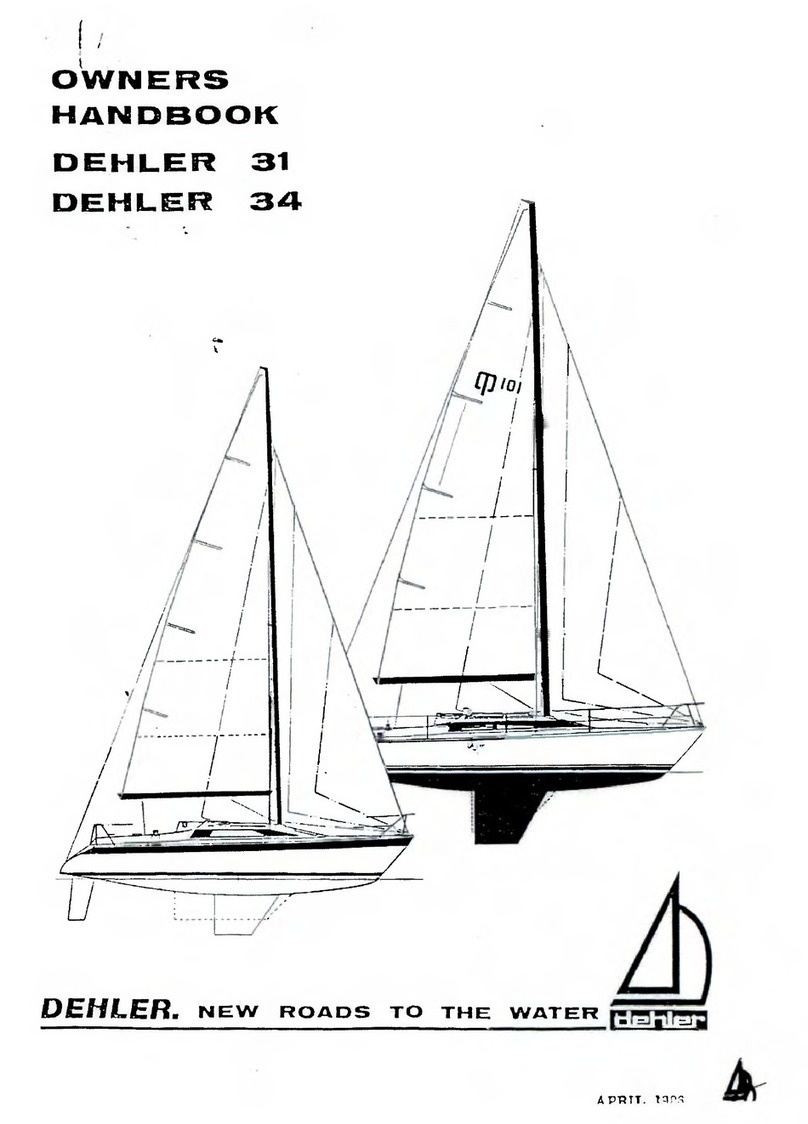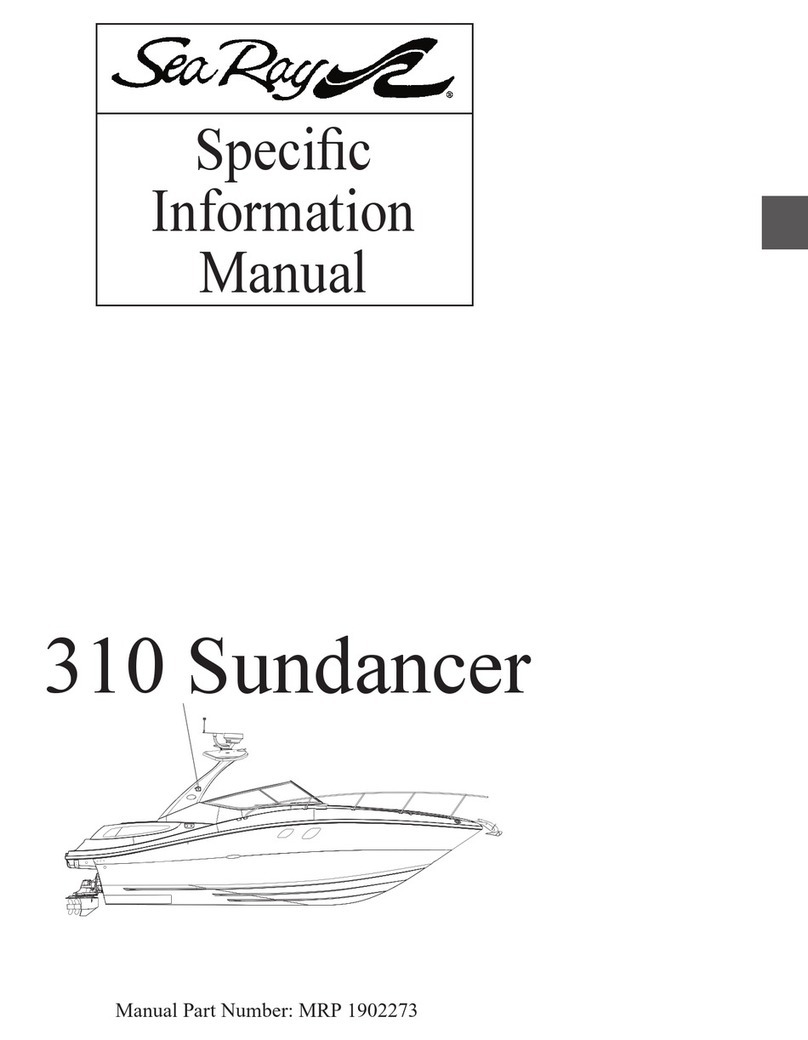Nemaxx 330 User manual

INFLATABLE BOAT ●SCHLAUCHBOOT
BATEAU PNEUMATIQUE ●GONFIABILE ●
BOTE DE GOMA ●
Nemaxx 330
EN INSTRUCTION MANUAL page 2 - 20
DE GEBRAUCHSANLEITUNG Seite 21 - 39
FR MANUEL D'UTILISATION page 40- 58
IT MANUALE DI ISTRUZIONI pagina 59 - 77
ES MANUAL DE INSTRUCCIONES página 78 - 96

[ EN ● 2]
Version: 1.2
KEN002ZB 02.02.2020
Table of Contents
Table of Contents.............................................................................................................................................. 2
General information.......................................................................................................................................... 3
Hazard warnings........................................................................................................................................ 3
National legislation .................................................................................................................................... 4
Important safety instructions...................................................................................................................... 4
Design categories (European directive 94/25/CE) .................................................................................... 6
Product information .......................................................................................................................................... 7
Type plate.................................................................................................................................................. 7
Technical data............................................................................................................................................ 7
Boots components..................................................................................................................................... 8
Scope of delivery..................................................................................................................................... 10
Assembly and disassembly ............................................................................................................................ 10
Assembly of base plates.......................................................................................................................... 10
Seat mounting ......................................................................................................................................... 11
Inate....................................................................................................................................................... 11
Paddle equipment.................................................................................................................................... 13
Outboard engine...................................................................................................................................... 14
Deate ..................................................................................................................................................... 15
Folding the boat together......................................................................................................................... 15
Transport ................................................................................................................................................. 15
Informationen on safety and operation........................................................................................................... 16
Checklist before comissioning................................................................................................................. 16
Stability and buoyancy............................................................................................................................. 16
Dangers................................................................................................................................................... 18
Maintenance................................................................................................................................................... 19
Cleaning agents....................................................................................................................................... 19
Small repairs............................................................................................................................................ 19
(Winter) Storage ...................................................................................................................................... 20

[ EN ● 3]
Version: 1.2
KEN002ZB 02.02.2020
●HAZARD WARNINGS
Your safety, as well as the safety of others with and around you, is a direct result of how you operate and maintain
your boat. To avoid injury and product damage, read and understand this manual carefully. Learn how to operate
your boat properly. If you have any questions, contact your dealer.
The following safety instructions are used in this manual to draw your attention to specific safety instructions that
should be followed.
Follow all safety messages that follow this symbol to avoid possible injury or death.
IMPORTANT: Please keep this manual in a safe place and hand it over to the new owner when
selling the boat. Please read this information carefully before using the boat for the rst time and keep
this manual for future reference.
INTRODUCTION
Welcome aboard!
Congratulationsonchoosinganemaxxinatableboat.
This instruction manual contains all safety and operating information, information about the boat, its equipment,
equipment and maintenance. Please read these operating instructions carefully and apply all safety rules
carefullyandfamiliariseyourselfwiththeinatableboatbeforeusingit.
All information in this manual is based on the latest product information at the time of printing. Due to our
continuousproductimprovement,wereservetherighttomakechangestospecicationsandmodelsandto
discontinuemodelsatanytime.Therightisalsoreservedtochangespecications,partsoraccessoriesatany
time without obligation to equip them on models manufactured prior to the date of the change.
Useonlytrainedandknowledgeablepersonnelformaintenance,repairormodication.Modicationsthat
mayaffectthesafetycharacteristicsoftheboatmustbeevaluated,carriedoutanddocumentedbyqualied
personnel.
Any boat, no matter how robust, can be severely damaged if used improperly and which does not comply with
boating safety rules. Always adapt the speed and direction of the boat to the sea conditions. The boat should
have the usual safety equipment on board according to the weather conditions (e.g. life jackets).
The illustrations used in this manual are for reference purposes only and do not necessarily represent actual
components of the effective components.
DANGER
indicates an immediately hazardous situation which, if not avoided, will result in death or serious injury.
WARNING
indicates a potentially hazardous situation which, if not avoided, could result in death or serious injury.
GENERAL INFORMATION

[ EN ● 4]
Version: 1.2
KEN002ZB 02.02.2020
CAUTION
Indicates a potentially hazardous situation which, if not avoided, could result in minor or moderate
injury.
NOTE: provides important information and draws attention to situations whose non-observance can lead, for
example, to failure of the engine or other main components.
●NATIONAL LEGISLATION
Before operating the nemaxx inflatable boat, the respective legal regulations regarding restrictions on the waters
on which you wish to operate the boat must be obtained. These include restrictions on general operation, speed,
use of outboard engines, airborne noise levels, etc.
●IMPORTANT SAFETY INSTRUCTIONS
In order to enjoy the waters safely, you should familiarise yourself with local and other applicable shipping rules
and regulations and observe the following suggestions.
●Use rescue aids. An approved and certified lifejacket of the correct size must always be available on board for
all boat occupants (required by law).
●THE DATA ON THE TYPE PLATE MUST NOT BE EXCEEDED!
●Do not overload the boat. Most boats are designed for a maximum load (weight) (see nameplate on your
boat - the nameplate is located on the inside of the boat mirror). Overloading violates the regulations
●Do not exceed the recommendations regarding the maximum number of persons allowed. Irrespective of the
number of persons on board, the total weight of persons and equipment must under no circumstances exceed
the maximum recommended payload.
●Carry out safety checks and prescribed maintenance work. Follow a regular maintenance schedule and
ensure that all repairs are carried out properly.
●Know and respect all shipping rules and regulations.
●Before each use, check that the boat is inflated and in the case of long water voyages, inflate the boat a
maximum of 24 hours in advance.
●Children are not allowed to use the boat without adult supervision.
●Ensure that all occupants of the boat are seated properly. Passengers must not sit in seats not intended
for this purpose. This includes all parts of the boat where sudden, unexpected acceleration, sudden stop-
ping, unexpected loss of control of the boat or sudden movement of the boat could cause a fall in the boat or
overboard.
●Driving under the influence of drugs or alcohol is prohibited by law. Alcohol and drugs affect your judg-
ment and reaction.
●Carefully inspect all boat parts, including air chambers and air valves, before each use to ensure that everything
is in proper condition and securely secured. If damage is found, please stop to repair it.
●On longer journeys, safety equipment such as torches, first aid kits, anchors, etc. must be adequately conside-
red.

[ EN ● 5]
Version: 1.2
KEN002ZB 02.02.2020
●Familiarize other people with the boat's operation.Familiarise at least one person on board with the basics
of starting and operating the outboard engine and handling the boat. This is useful if the driver becomes
disabled or falls overboard.
●When passengers board or disembark or are near the stern, the engine must always be switched off. It is not
enough to switch the outboard engine to neutral only.
●Always be careful. The skipper is legally responsible for keeping his eyes and ears open in order to detect pos-
sible dangers in good time. In particular, the skipper must have unobstructed forward vision. If the boat is
running at more than idle speed, no passengers, cargo or fishing seats may obstruct the boatmaster's view.
●Never drive the boat directly behind a water skier, as he or she could fall. Watch out for fallen water skiers.
The skipper must always keep an eye on fallen water skiers and must never go backwards to a person in the
water.
●Never set off on the water alone.
●Always load the boat carefully and distribute the load evenly in order to maintain the (flat) trim position
of the boat. Do not store heavy objects high up.
●Observe offshore winds (from land to water) and currents.
●Do not use in strong winds in open waters.
●Never jump into the product.
●Never let vehicles pull you.
●Do not inflate with compressed air. Do not inflate excessively! Check the pressure frequently when inflating.
●Always inform someone of your departure time and place. Suggested route and time you expect to
return.
●The display of navigation lights may be required. The user should ensure that a boat is not operated in dar-
kness or other dangerous weather conditions unless the correct navigation lights have been installed and are
functioning properly.
CATION
Do not under any circumstances exceed the maximum recommended payload when loading the
inflatable boat. Always load the boat carefully and distribute the load evenly in order to maintain the
(level) trim position of the boat.
CAUTION
Do not exceed the recommendations regarding the maximum number of persons allowed. Irrespec-
tive of the number of persons on board, the total weight of persons and equipment must under no
circumstances exceed the maximum recommended payload.
PAYLOAD
NUMBER OF PERSONS ALLOWED

[ EN ● 6]
Version: 1.2
KEN002ZB 02.02.2020
●DESIGN CATEGORIES (EUROPEAN DIRECTIVE 94/25/CE)
Table 1 (Design category)
Category Navigation Wind force and wave height
A Ocean Designed for extended, longer trips where conditions can
exceed wind power 8 (Beaufort scale) and wave heights
of 4m / 13 feet and above
B Open sea Designed for open sea rides where conditions can expe-
rience wind force 8 (Beaufort scale) and wave heights up
to 4m / 13 feet.
C Coastal waters Designed for trips in coastal waters, large bays, estua-
ries, lakes and rivers where conditions can experience
wind force 6 (Beaufort scale) and wave heights up to 2m
/ 6.5 feet.
D Protected waters Designed for travel on sheltered coastal waters, small
bays, small lakes, rivers and canals, where conditions
wind force 4 (Beaufort scale) and wave heights up to
0.5m / 1.5 feet
CAUTION
Be careful when refuelling, observe the smoking ban and immediately remove spillage from the boat. Take care
not to damage the fuel lines when installing the engine. Ensure that combustible materials do not come into
contact with hot engine parts
DANGER
Overpowering may cause serious or fatal injury or damage to the boat.
DANAGER
You may lose control of the boat when the engine is running at full throttle. There is a risk of accident.
The manufacturer is not responsible for such actions..
The maximum engine power for this boat is listed in the Table - Technical Data in this manual.
OUTBOARD ENGINE

[ EN ● 7]
Version: 1.2
KEN002ZB 02.02.2020
Model Size Max. Load
Capacity
Tube Dia. Number of air
chambers
Max. Power
kW / HP
Max. Load kg Max.
Person
330 3.30 m x 1.50 m 505 kg 42 cm 3 + 1 11 / 15 505 4+1
●TYPE PLATE
TYPE PLATE NEMAXX 330
NOTE: The type plate is located on the inside of the boat mirror.
a) Design category - see Table 1
b) Model number
c) Maximum number of persons (adults + children)
d) Maximum payload: persons + outboard engine + fuel tank + equipment
e) Maximum outboard engine power
f) Air chamber pressure
g) CIN-CraftIdenticationNumber
h) Manufacturer (name and address)
i) Country of origin
●TECHNICAL DATA
a
b
c
d
e
f
g
h
i
PRODUCT INFORMATION

[ EN ● 8]
Version: 1.2
KEN002ZB 02.02.2020
●BOAT COMPONENTS
ARRANGEMENT OF COMPONENTS
REAR VIEW
FRONT VIEW - D-RINGS
a
b
c
a - Motor plate
b - Type plate
c - Drain valve
a - Tow rings
b - Lift handle
a ab

[ EN ● 9]
Version: 1.2
KEN002ZB 02.02.2020
SIDE VIEW
a
b
a - Keel air chamber valve
b - Air chamber valve

[ EN ● 10 ]
Version: 1.2
KEN002ZB 02.02.2020
●SCOPE OF DELIVERY
●Floating body
●Aluminium floors
●Side profiles (side joiner)
●Repair kit
●Instruction manual
●Transport bag
●Benches
●Paddles
●Foot pump with manometer
ASSEMBLY AND DISASSEMBLY
●ASSEMBLY OF BASE PLATES
NOTE: Theoorplatesmustbeinstalledintheboatbeforetheboatisinated.
1. Clear a level surface that is clean and free of sharp objects.
2. Unfold the boat and lay it flat.
3. Fasten the valves in place. Check that the cap gasket is properly seated and attach the valve holder to each
valve.
4. Slide the front bottom plate (no. 1) into the bow. Position the opening above the keel air chamber valve. Join
the base plate (no. 2) with the front base plate.
5. Slide the rear base plate under the mirror holder (no. 4).
6. Assemble the remaining base plates. Position the middle base plates so that they form an inverted V-shape.
Align the side edges of the base plates straight and then press on the V-profile to level the base plates.
NOTE: The floor panels are reinforced by the side profiles installed on the panels. Position these side profiles
so that they are inserted between the rubber stops on the side air chambers.
1234
installation
sequence
press down stern

[ EN ● 11 ]
Version: 1.2
KEN002ZB 02.02.2020
A
C
B
A - Paddle
B - Bottom plates
C - side prole (side joiner)
●SEAT MOUNTING
●INFLATE
7. Pump up the keel a little to lift the bottom plates off the floor.
8. Position the side joiners between the rubber stops
Theseatmustbettedbeforetheboatisfullyinated
Inatetheboataboutthree-quartersandinserttheseat.Theninatetheboatfully.
Valves
Theinatablevalvesarespeciallydesignedforsafeandcomfortableuse.Thevalvesareattoincrease
comfort in the boat and prevent damage to the boat.
Make sure the valve is tightly closed before using the boat.
Operating the valve:
●Remove the outer cap. The valve is closed when the middle propeller is in the upper position.
●To open the valve, press the valve bar once.
●To close the valve, press the valve stem again.

[ EN ● 12 ]
Version: 1.2
KEN002ZB 02.02.2020
Connecting the pump
Connect the end piece of the pump (which must be turned) to the valve.
●Turn to the right (clockwise) and start pumping.
●Inatetheboatuntiltherequiredpressureisreached.
●Afterination,removethepump.
●Make sure that the protective cap is replaced (to protect against dirt and damage).
Check the valve and make sure that no air escapes around the valve.
Inating
Toensurealonglifeofyourboat,itisparticularlyimportantthatitisproperlyinatedanddrained.
NOTE: Overpressure can damage seams and chamber partitions. Do not use a compressed air source
(compressor) to ll the air chambers.
IMPORTANT: Never ll a chamber to full volume or empty it completely. When inating or deating the
chambers, maintain a balanced air pressure to prevent damage to the internal partitions separating the
air chambers. Do not inate one air chamber fully on its own, but so that all chambers are lled evenly
one by one up to full pressure.
Whenusingtheboatforthersttime,lltheboatcompletelybyattachingthefootpumptoeachofthevalves
individuallyandpumpingairtobalancethepressurebetweenthechambersuntilitiscompletelylled.
The air pumps supplied with the boat are specially designed to inate the boat at the correct ination
pressure. When they are used, any overpressure problems are avoided. Thanks to their suction functi-
on, they also allow the oats to be completely emptied and thus easily folded.
a
b
open
close
a) - valve stem
b) - valve cap

[ EN ● 13 ]
Version: 1.2
KEN002ZB 02.02.2020
Inate inatable boat
1. Inatethesideairchambersbeforeinatingthekeelairchamber.Pumptheairchambersasfollows.
NOTE: Inserttheremovableseatbeforetheboatisfullyinated.
●Install the bottom plates into the boat. See Installing the Floor Plates.
●Unscrew the valve caps. Turn the caps a quarter turn counterclockwise.
●Make sure that the valve shafts are positioned in the closed position. Push in the valve stem and turn it
to the closed position.
●Connect the air hose adapter to the valve.
●Startingatoneoftheairvalves,inatetheairchambersonebyonetoone-quarteroftheircapacity.
Repeatthisproceduretollallairchambersevenlyuntiltheyareinatedtotherecommended air
pressure of 0.25 bar (3.6 psi).
2. Unscrew the valve cap from the keel air chamber. Turn the cap a quarter turn counterclockwise. Make sure
that the valve stem is positioned in the closed position. Connect the air hose adapter to the valve. Inate
the keel to the recommended air pressure of 0.35 bar.
3. Afterination,tightenthevalvecapsrmly(turnclockwise).
NOTE: Always monitor the air pressure in the air chambers. The air volume in the air chambers expands as the
internalairtemperatureincreases.Thiscausestheairpressuretouctuatedependingonwatertemperature
andweatherconditions.Aftertheboathasbeeninatedtothecorrectairpressure,thepressuremaydropas
temperatures drop, requiring additional air. Direct sunlight or rising temperatures may cause the pressure to
become too high. In this case some air must be let out of the chamber until the recommended air pressure is
reached..
●PADDLE EQUIPMENT
Nemaxx inflatable boats are available in standard version with paddles or with oars, oarlocks and a rudder seat.
Install the bottom plates into the boat. See Installing the Floor Plates.
●Ensure that the seat is properly installed.
●If the oars are not used, they must be secured in the clamps on the side of the boat.
Thearrangementoftheoarsonthisinatableboatensuresacomfortablepositionwhenrowing.Usethe
bench provided to make rowing as comfortable as possible.

[ EN ● 14 ]
Version: 1.2
KEN002ZB 02.02.2020
Mounting the engine
●Ensure that you have a secure footing.
●Unlock the motor to tilt and mount the motor to the mirror.
●The motor must be mounted in the middle of the mirror for it to function properly.
●Screw the brackets securely to the rear.
Arrangement of the outboard engine
The outboard engine must be installed so that it is vertical in the water in its normal operating position. The
positioning of the outboard motor is important for the sailing characteristics of the boat. If the outboard motor is
not in the correct position it can splash water into the boat or suck in air.
Starting the engine:
●Pull the boat into the water.
●Move the engine to the lower operating position.
●Ensure that the boat is stable and start the engine.
NOTE: Choose an outboard motor for the boat whose power range and maximum weight meet the boat's
requirements. Information on the maximum power and maximum weight of the outboard can be found in the
"Technical Data" table in this manual or on the nameplate attached to the boat.
●OUTBOARD ENGINE
DANGER
Overpowering may cause serious or fatal injury or damage to the boat.
Operation of an outboard motor that exceeds the maximum engine power of the boat may result in
1) Cause manoeuvring problems and affect the stability of the boat.
2)Sternweightoftheboatandthusachangeintheotationcharacteristicsoftheboatinduce
3) Lead to breakage of the boat, especially in the area of the stern.
Information on the maximum permissible engine power can be found under technical data in this
operating manual.
USE AN EMERGENCY STOP SWITCH. This switch switches off the engine when the skipper
leaves the operating position or goes overboard for any reason. Such falls are often also the cause
of poor handling, such as sitting on the seat back or the Schandeck when gliding, standing when
gliding,sittingonraisedshingboatdecks,operationwhenglidinginshalloworobstructedwaters.
CAUTION
●If the skipper goes overboard, the risk of serious or fatal injury from the boat can be greatly reduced
if the engine is switched off immediately. Always connect the pull rope to the emergency stop switch
and attach it to the skipper.
●The switch can also be accidentally activated during normal cruising. This could result in the follo-
wing dangerous situations.
●Avoid serious or fatal injuries caused by the deceleration force generated by an accidental or
unexpected triggering of the emergency stop switch. The skipper should never leave his operating
positionwithoutrstreleasingthepullrope

[ EN ● 15 ]
Version: 1.2
KEN002ZB 02.02.2020
●DEFLATE
NOTE: The boat must be clean and dry before being rolled up for storage.
Remove sand and dirt from boat skin.
Do not empty one chamber completely when discharging air from the boat.
Drain the air evenly from all chambers; this will prevent damage to the partitions in the boat.
●Placetheboatontheoor.
●Insertangerintothevalvetoopenthevalve.
●Drain some air from all chambers.
●Make sure that the valves remain open (so that the air can continue to escape when folded).
●Press evenly all over the boat to release as much air as possible.
●FOLDING THE BOAT TOGETHER
●Put the boat on the ground.
●If present, remove the bottom plates.
●Fold the boat towards the centre so that the whole boat is as wide as the mirror.
●Bring the end cones at the rear end of the side chambers to the middle of the mirror.
●Rollthemirrorforward.Thiswillhelptodeatetheair.Makesureallvalvesareopen.
●Iftheboatisfoldedinthisway,itwilltintothesuppliedbagfortransport.
●TRANSPORT
Make sure that there are no sharp parts where you want to lift the boat out of the water. Using the handles to
lift the boat
Iftheboatistowedbyanotherboat,theinatableboatmustbeempty.Removetheoutboardengine,fueltank
and equipment from the boat.
CAUTION
●When towing, no persons may be on board the towed boat.
●Check the towing line frequently.
●Regularly check the condition of the towed boat and ensure that it does not absorb any
water.
LIFTING THE BOAT OUT OF THE WATER
TOWING A BOAT

[ EN ● 16 ]
Version: 1.2
KEN002ZB 02.02.2020
INFORMATION ON SAFETY AND OPERATION.
IMPORTANT: The bow ring handle must not be used for towing, anchoring or mooring the boat.
For towing, use the appropriate towing eyelets on the starboard and port side of the boat. Attach the line
between the towing eyes in such a way that they are shaped like a reins. Attach a tow line to this reins and tow
the boat at low speed.
●Check the air pressure in the air chambers.
●Removeallblockagesfromtheself-drainingoordrain.
●Check the outboard motor for safe mounting on the mirror.
●Check the fuel level and determine the range per level.
●Ensure that the outboard engine emergency stop switch is functioning properly.
●Ensure that the boat is not overloaded. Do not exceed the maximum number of passengers and payload.
Pay attention to the payload plate.
●Ensure that an approved lifejacket of the correct size is available for each person on board and that it is
easily accessible.
●Ensure that the paddles are in the boat in case of engine failure.
●The skipper knows the procedures for safe navigation, safe boating and safe outboard operation.
●A life belt or life cushion that can be thrown to a person in the water.
●Distribute passengers and cargo evenly throughout the boat. All persons must sit in designated seats or on
theoor.
●Instruct at least one passenger in the basic concepts of handling the boat and starting and operating the
outboard engine if the skipper is unable to operate the boat or falls overboard.
●Before sailing, inform someone of the destination of the trip and the expected time of return.
●Know the waters and the area. Know the tides, currents, sandbanks, rocks and other hazards.
●STABILITY AND BUOYANCY.
DISTRIBUTION OF PERSONS AND LUGGAGE
For safe operation, it is recommended that passengers sit in the middle of the boat whenever possible. It is
possible to sit on the sides of the boat if someone is sitting on the other side.
Make sure that loose equipment is securely fastened during the voyage.
All loads placed in the boat should be evenly distributed to ensure correct trim of the boat during operation..
●CHECKLIST BEFORE COMMISSIONING.

[ EN ● 17 ]
Version: 1.2
KEN002ZB 02.02.2020
Breaking waves pose a serious threat to stability. Always wear a life jacket!
DRIVE ALONE - If the boat is operated without other passengers, the skipper must NOT sit on the hoses or
seat. The weight must be held as far forward and in the middle as possible.
Do not place heavy objects near the mirror. Avoid extremely fast acceleration in order to avoid the risk of
overturning.Windandwavescanbeextremelydangerousfortheinatable.Theboatcanoverturneasilyifthe
cargo is not well distributed in the bow and wind and current are acting against the bow.
The distribution of the load and the weight hold the bow to ensure safety on the water.
●If your outboard motor is mounted too high on the mirror, excessive cavitation will occur (air bubbles and
slippage on the propeller).
●If the outboard motor is mounted too low on the mirror, this causes resistance and water is sprayed into the
boat..
Bothwillresultinareductioninspeed.Youshouldthereforendtheidealpositionbeforemountingtheengine
rmlyonthemirror(consulttheenginemanufacturer).
It is recommended to keep the boat level at all speeds. The bow should not point UP or DOWN to the water.
PAY ATTENTION TO THE FOLLOWING:
●If the outboard engine is angled too far away from the mirror, the boat will be driven with the bow raised.
●If the outboard engine is angled too close to the mirror, the bow will be pushed too deep into the water,
resulting in a loss of speed and/or cavitation.
●Check the engine mounting bolts regularly. A loose engine screw connection leads to sudden engine opera-
tion and can even lead to loss of the engine overboard.
●Read the engine manual carefully before starting the engine.
●Check that the cargo on board does not rub against the boat skin or puncture it.
Turning the boat
Reduce the driving speed for sharp turns. The boat tilts considerably towards the inside of the turning circle.
WARNING
When driving at high speeds or gliding: avoid abrupt turns and high waves as these can endanger
passengers. Ensure that all persons hold on to the handles. Reduce speed during swell for comfort
and safety. Small children must sit in the boat.
OPERATION UNDER MOTOR

[ EN ● 18 ]
Version: 1.2
KEN002ZB 02.02.2020
Air chamber defect
Yournemaxxinatableboatisequippedwithmorethanoneairchamber.Forthisreasontheboatretainsat
least 50% of its buoyancy when an air chamber is pierced and air escapes. Shift the weight to the other side. If
necessary, seal the leaking chamber (by tying or holding it up) and immediately set course for shore or mother
ship (whichever is closer). Pay special attention to shoals or reefs as they may scratch the boat and cause
further damage.
Landing (beaches)
DO NOT place the boat on the beach under engine power, pull it over rocks, sand, gravel or paving, as this
may damage the boat skin.
Sunlight
The boat should not be exposed to sunlight for long periods of time. Changing the air pressure in the tubes can
damage the boat. Excessive exposure to sunlight (ultraviolet rays) over a longer period of time may accelerate
the ageing of the material.
Protect and cover the boat from direct sunlight. In addition, the use of a boat cover, tarpaulin is recommended
to avoid e.g. deposits of exhaust gases (soot).
If the boat is to be temporarily left on a beach, part of the boat should be left in the water to dissipate the inter-
nal heat generated by sunlight, which increases air pressure.
Smoking
Avoid smoking, especially when refuelling the boat. Portable fuel tanks should be placed on a padded base
and securely fastened to the boat with a strap to avoid impact and the risk of damage during travel.
Refuelling
Always follow the recommendations below when refuelling:
●If possible, remove portable tanks from the boat for refuelling.
●Fillthetanksinafreeareaawayfromheatsources,sparksorames.
●Donotllthetankstothebrim.Thefuelexpandsasthetemperaturerises,causingthefueltooverowor
even burst the tank.
Operation at altitudes
Iftheboathasbeeninatedatsealevel(lowaltitude)andthentransportedtohigheraltitudes(e.g.foroperati-
on in a mountain lake), the pressure at altitudes must be reduced to avoid overpressure.
Water hazards
●Wrecks, reefs, rocky shores, sandbanks and shoals should be avoided or approached with caution.
●If you are sailing in unknown waters, inform yourself about the local water hazards before take-off.
●DANGERS

[ EN ● 19 ]
Version: 1.2
KEN002ZB 02.02.2020
MAINTENANCE
●Household cleaners should only be used sparingly and must not be discharged into the water.
●Never mix cleaning agents and ensure adequate ventilation in closed rooms.
●DO NOT use harsh cleaning agents, solvents or products containing phosphates, chlorine, solvents or
products that are not biodegradable or oil-based.
●IMPORTANT: Do NOT use waxes or detergents containing alcohol on the boat fabric. Alcohol will dry out
the boat fabric prematurely.
●Citrus-based cleaners are excellent for cleaning boats and are safe for you and the environment.
●Your dinghy is best cleaned with water and normal soap.
●CLEANING AGENTS
●SMALL REPAIRS
For small holes, you can use the material provided in the repair kit.
For larger areas - or if the patch overlaps a seam - the damage should be repaired by a professional
repair mechanic in a dinghy repair shop.
For best bonding results, the relative humidity should be less than 60% and the temperature should be bet-
ween 18°C and 25°C (65°F and 77°F). Do not carry out such repairs in direct sunlight.
In general, proceed as follows:
●Cut out a patch large enough to overlap the damaged area by 30 mm on all sides.
●Center the overlapping patch on the damaged area and mark the outline of the patch with a pencil.
●Remove stains from the surface around the air leak and patch by roughening this area evenly, but not too
deeply,withsandpaperwithoutexposingthebresofthematerial.
●Clean the area around the damaged area and the patch.
●Apply two thin layers of adhesive to the back of the patch and the area to be repaired on the boat using a
short-hairedbrush.Allowtherstlayertodrycompletely(about15minutes)beforeapplyingthesecond
layer.Thesecondcoatmustdryuntilsticky.Thenapplythepatchtothepreparedareaandpressrmlyinto
place. Remove any air bubbles trapped under the patch with a smooth object (the back of a spoon is good).
Work from the centre of the patch outwards.
●Wait24hoursbeforeinatingtheboatagain.

[ EN ● 20 ]
Version: 1.2
KEN002ZB 02.02.2020
IMPORTANT To avoid discoloration of boat skin or hoses due to vegetation or polluted waters, DO NOT leave
the boat in the water for extended periods of time.
●After each operation, the boat and all parts should be washed with mild soap and rinsed with fresh water.
All parts should be allowed to dry before storage in a carrying bag. This prevents stick or mildew stains.
●Before storing, make sure that the product is absolutely dry.
●To keep the boat looking good, store it in a cool, dry interior and protect it from direct sunlight. Protect the
boat from rodents and other damage that could damage the material.
●Theproductcanalsobestoredintheinatedstate,butinthiscasedonotplaceheavyorsharpobjectson
it. It is not recommended that the vessel be suspended.
●If you store the boat for a long time, do not store it in the pack (or sack) provided. The boat is folded too
tightly in the pack, resulting in sharp folds in the material. Roll up or fold the boat loosely and store it in a dry
place. To prevent damage to the boat during storage, do not place heavy objects on the boat.
●(WINTER) STORAGE
Table of contents
Languages:
Popular Boat manuals by other brands

Yamaha
Yamaha WaveRunner GP1800 2017 Owner's/operator's manual
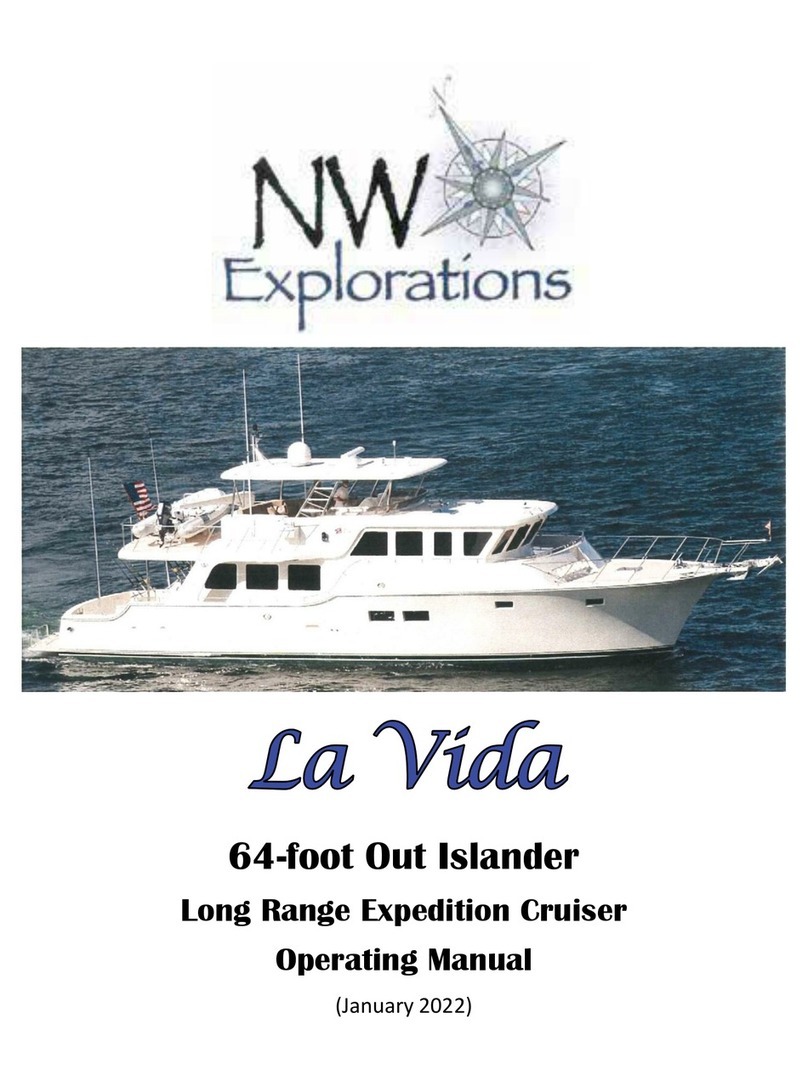
NW Explorations
NW Explorations La Vida 2022 operating manual

Cobalt Digital Inc
Cobalt Digital Inc 46 owner's manual
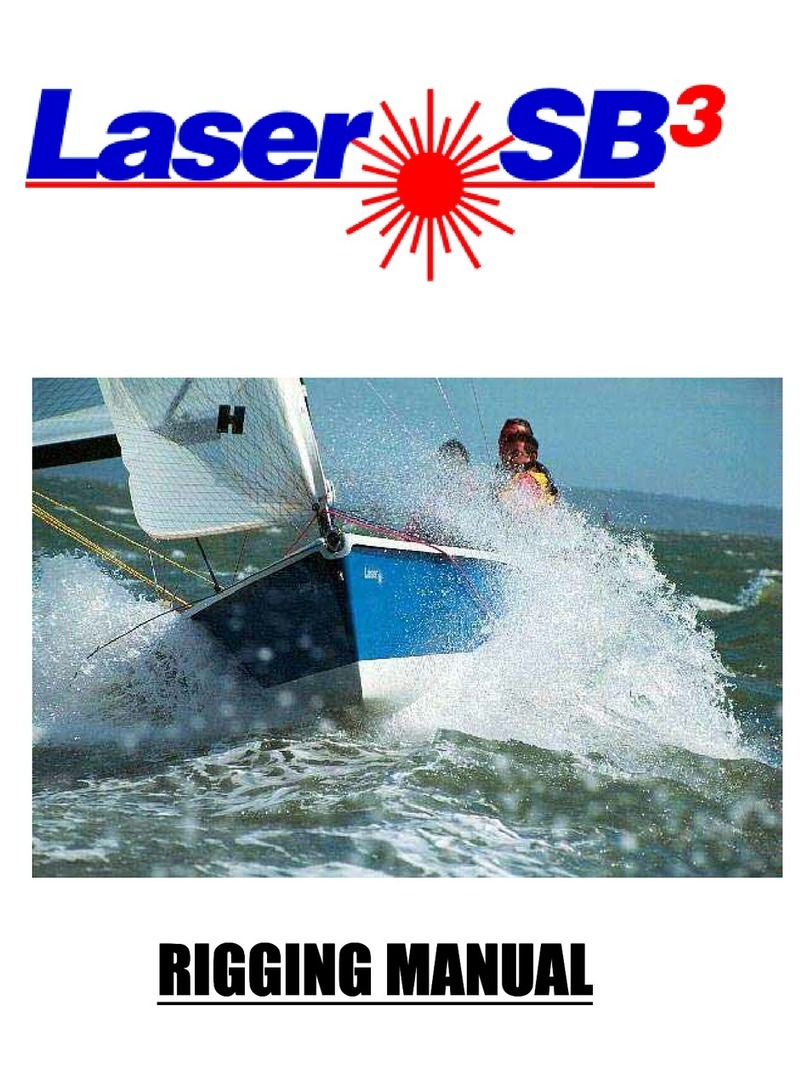
Laser
Laser SB3 Rigging manual
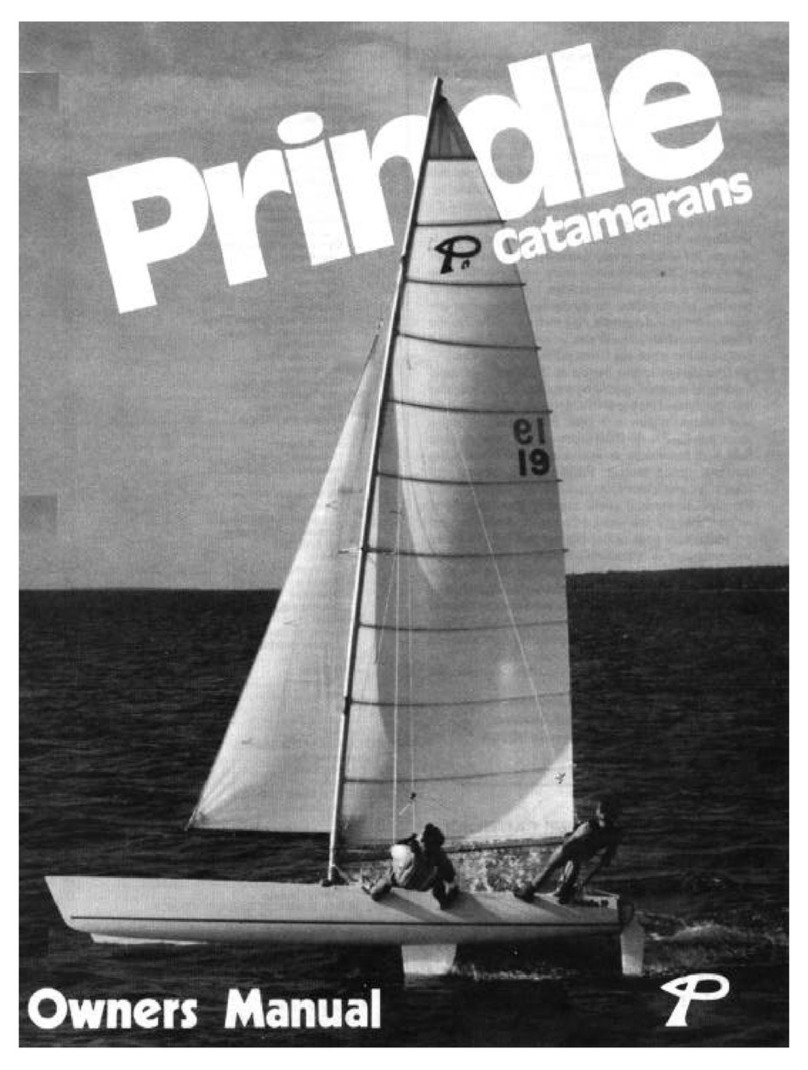
Performance Catamarans
Performance Catamarans Prindle 18-2 owner's manual
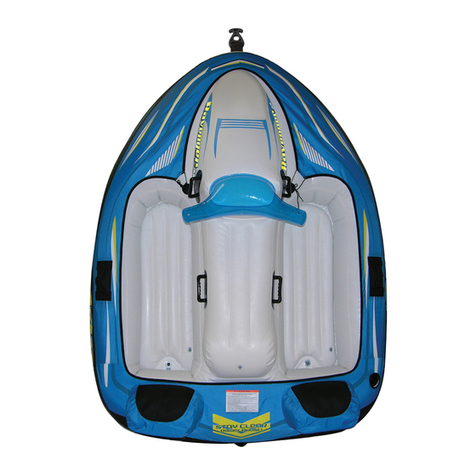
Rave Sports
Rave Sports Ravenger Plus owner's manual
